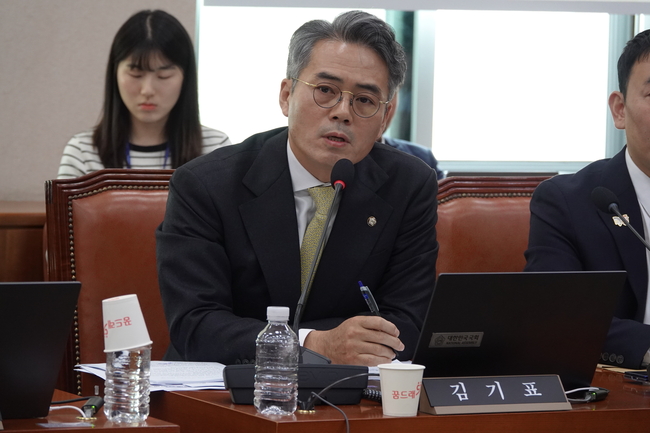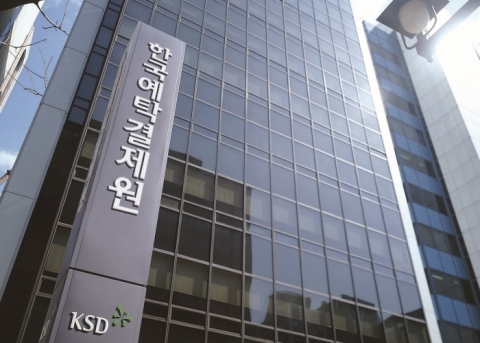
브레이크뉴스 정민우 기자= 쿠팡이 취업규칙을 변경해 일용직 근로자에게 지급하던 퇴직금을 지급하지 않은 것으로 확인됐다.
7월 한 달 고용노동부에 신고된 쿠팡풀필먼트서비스(CFS)의 일용직 근로자 수만 10만여명이며, 이들이 퇴직금 지급 기준을 충족했다고 가정 시 지급될 퇴직금 총합은 최대 2000억원(퇴직금 200만원)에 달한다.
김주영 더불어민주당 의원이 10일 고용노동부에 신고된 쿠팡CFS의 지난해 취업규칙 변경 심사보고서를 확인한 결과에 따르면 일용직 근로자 퇴직금 지급 규정을 변경해 퇴직금 지급 대상을 대폭 축소했다.
이는 ‘일용직 근로자의 퇴직금 지급’을 폭넓게 보장하는 근로자퇴직급여보장법(퇴직급여법)과 대법원 판례에 위배되는 것이다. 실제, 취업규칙 변경 뒤 고용노동부에 제기된 퇴직금 미지급 진정 및 신고 건수가 폭증했다.
쿠팡CFS는 일용직 근로자에게 불리한 내용을 고용노동부 해석이라고 주장하며, 퇴직금 미지급의 근거로 제시했다.
쿠팡CFS는 지난해 5월 26일 기존 취업규칙의 ‘퇴직금’ 관련 조항을 ‘퇴직금품’으로 변경하고, 1년 이상 계속근로한 근로자의 퇴직급 지급 기준을 손질했다. ‘계속근로기간을 산정할 때 근로자의 4주 평균 주당 근로시간이 15시간 미만인 기간을 제외’하던 것을 ‘매 1년 단위로 4주 평균 주당 15시간 이상이어야만 퇴직금품 지급 대상’으로 변경한 것이다.
즉, 4주 평균 주당 근로시간이 15시간 미만인 기간이 있더라도 그 기간을 제외하고 1년 이상 일했다면 일용직 근로자라도 퇴직금을 받을 수 있었지만, 취업규칙 변경 후에는 4주 평균 주당 근로시간이 15시간 미만이 기간이 포함되면, 근로기간이 다시 0에서부터 시작된 것으로 봐 1년 이상 근무했더라도 퇴직금을 받을 수 없게 된 것이다.
실제 개정 취업규칙의 ‘단기사원 퇴직금품 지급 기준’에서 쿠팡CFS는 “근로한 날 이후 다음 근로한 날까지 1개월 이상 근로를 하지 않은 경우에는 다음 근로한 날을 최초 근로한 날로 하여 새롭게 기산한다”고 밝혔다.
일례로, ‘2022년 1월 1일부터 2022년 12월 31일까지 1개월 이상 단절 없이 근로했으나, 2022년 3월달에는 주당 1일만 근로한 경우 지급대상이 아니다’고 설명했다. 올해처럼 추석연휴가 길다면 한주만 쉬어도 퇴직금 지급 기준에 미달할 가능성이 있는 것이다.
그러면서 쿠팡CFS는 “단기사원의 경우 당일 근로하며, 당일 약정된 근로의 종료와 동시에 자동적으로 근로관계가 종료되므로 퇴직금 지급 대상이 원칙적으로 될 수 없으나, 회사는 호혜적으로 단기사원에 대한 퇴직금품 지급 기준을 정해 요건을 충족한 단기사원에게 퇴직금품을 지급한다”고 답했다.
기존에 퇴직급여법과 취업규칙에 따라 1년 이상 근무한 일용직 근로자에게 지급하던 퇴직금을 삭제하면서 “호혜적으로 퇴직금품을 지급한다”며 마치 애초부터 지급 대상이 아닌 일용직 근로자에게 시혜를 베풀어 퇴직금품을 지급한다는 것이다.
그러나 이는 거짓이라고 김 의원은 지적했다. 1995년부터 현재까지 일관되게 적용되고 있는 대법원 전원합의체 판례는 “최소한 1개월에 4, 5일 내지 15일 정도 계속해서 근무했다면 퇴직금 지급 요건을 충족한다”며 “형식상으로는 비록 일용직 근로자로 돼 있다 하더라도 일용관계가 중단되지 않고 계속돼 온 경우에는 상용근로자로 보아야 한다”는 판단이다.
대법원은 “근로계약이 만료됨과 동시에 근로계약기간을 갱신하거나 동일한 조건의 근로계약을 반복하여 체결한 경우에는 갱신 또는 반복한 계약기간을 모두 합산해 계속근로 년수를 계산해야 한다”고 판결했다.
일용직 근로자는 지난 4월에도 해당 판례에 따라 대법원 최종 승소 판결을 받은 바 있다. 노동부 역시 “4주 평균 주당 15시간에 미치지 못하는 기간이 있으면, 그 기간을 제외하고 산정”한다는 행정해석을 내렸다.
그럼에도 쿠팡CFS측은 계속근로기간이 1년이 넘는 일용직 근로자 A씨의 퇴직금 지급 요청에, “연속 1년간 4주 평균 15시간 이상 근로했을 경우에 한해 퇴직금을 지급하고 있다”며 “일용직은 계속근로가 인정되지 않는다는 것이 고용노동부 해석”이라고 주장했다.
2024년 7월 한달 기준 쿠팡CFS의 일용직 근로자수(중복 제외)는 10만960명이다. 이들의 퇴직금을 200만원이라고 계산했을 경우 단순합산하면 2000억원에 달하며, 이 중 10분의 1만 계속근로기간 1년 이상을 채운다 해도 200억원에 이르는 규모다.
한편, 쿠팡 계열사 전체의 퇴직금 미지급 진정 및 신고도 급증하고 있다. 쿠팡 계열사를 대상으로 고용노동부에 진정 및 신고돼 행정종결된 사건만 671건으로, 이 중 237건이 퇴직금 미지급 신고건이다.
매년 20여건 안팎이던 퇴직금 미지급 진정은 쿠팡CFS가 취업규칙을 개정한 2023년에만 90건, 올해 8월까지 75건으로 폭증했다.
이에 김 의원은 “쿠팡은 취업규칙 불이익 변경으로 퇴직급여법이 보장한 당연한 권리를 박탈시키며 막대한 금전적 이익을 얻고 있다”며 “이는 불법행위로 취업규칙 변경의 내용과 그 절차에 대한 철저한 조사를 통해 일용직 근로자들의 빼앗긴 권리를 복원해야 한다”고 질타했다.
break9874@naver.com
*아래는 위 기사를 '구글 번역'으로 번역한 영문 기사의 [전문]입니다. '구글번역'은 이해도 높이기를 위해 노력하고 있습니다. 영문 번역에 오류가 있을 수 있음을 전제로 합니다.<*The following is [the full text] of the English article translated by 'Google Translate'. 'Google Translate' is working hard to improve understanding. It is assumed that there may be errors in the English translation.>
“No retirement pay for daily workers”..Coupang saves billions by changing employment rules
It has been confirmed that Coupang changed its employment rules and did not pay severance pay to daily workers.
The number of daily workers at Coupang Fulfillment Service (CFS) reported to the Ministry of Employment and Labor in July is approximately 100,000, and assuming that they meet the criteria for severance pay, the total severance pay to be paid is up to 200 billion won (2 million won in severance pay).
According to the results of the review report on the change in employment rules of Coupang CFS last year reported to the Ministry of Employment and Labor by Rep. Kim Joo-young of the Democratic Party of Korea on the 10th, the severance pay payment regulations for daily workers were changed, drastically reducing the target of severance pay.
This is in violation of the Workers’ Retirement Benefit Security Act (Retirement Benefit Act), which broadly guarantees ‘severance pay payment to daily workers’, and Supreme Court precedents. In fact, the number of complaints and reports filed with the Ministry of Employment and Labor regarding non-payment of severance pay skyrocketed after the change in employment rules.
Coupang CFS claimed that the interpretation of the Ministry of Employment and Labor was disadvantageous to daily workers, and presented it as the basis for the non-payment of severance pay.
On May 26 last year, Coupang CFS changed the ‘severance pay’ related clause of the existing employment regulations to ‘severance pay product’ and revised the severance pay payment criteria for workers who have worked continuously for more than one year. The previous clause, ‘when calculating the continuous employment period, exclude the period in which the worker’s average weekly working hours for 4 weeks are less than 15 hours’, was changed to ‘only those who have worked 4 weeks on average for more than 15 hours per week for every year are eligible for severance pay product.’
In other words, even if there was a period in which the average weekly working hours for 4 weeks were less than 15 hours, if they worked for more than a year, they could receive severance pay even if they were daily workers. However, after the change in employment regulations, if a period in which the average weekly working hours for 4 weeks were less than 15 hours was included, the employment period was considered to start from zero again, so they were no longer eligible for severance pay even if they had worked for more than a year.
In the ‘Short-term Employee Severance Pay Standards’ of the actual revised employment regulations, Coupang CFS stated, “If you do not work for more than one month from the day you worked to the next day you worked, the next day you worked will be considered the first day you worked and the calculation will start anew.”
For example, it explained, “If you worked without a break for more than one month from January 1, 2022 to December 31, 2022, but worked only one day per week in March 2022, you are not eligible for payment.” If the Chuseok holiday is long like this year, even if you take just one week off, you may not meet the severance pay standards.
Coupang CFS responded, “In the case of short-term employees, they work on the day and the employment relationship automatically ends at the end of the agreed-upon work on the day, so they are not eligible for severance pay in principle. However, the company has set the severance pay standards for short-term employees in a mutually beneficial manner and pays severance pay to short-term employees who meet the requirements.”
By deleting the retirement allowance previously paid to daily workers who worked for more than a year according to the Retirement Allowance Act and Employment Regulations, they claimed that they were “paying retirement allowances in a reciprocal manner,” as if they were giving retirement allowances to daily workers who were not eligible to receive them in the first place.
However, Rep. Kim pointed out that this is false. The Supreme Court’s full bench precedent, which has been consistently applied from 1995 to the present, states that “if you have worked continuously for at least 4, 5, or 15 days per month, you meet the requirements for retirement allowances,” and that “even if you are a daily worker in name only, if the daily relationship has continued without interruption, you should be considered a regular worker.”
The Supreme Court ruled that “if the employment contract expires and the employment contract period is renewed or a new employment contract with the same terms is repeatedly concluded, the number of years of continuous employment should be calculated by adding up the periods of the renewed or repeated contracts.”
Daily workers also won a final ruling from the Supreme Court in April based on the case law. The Ministry of Employment and Labor also made an administrative interpretation that “if there is a period that is less than the average of 15 hours per week for 4 weeks, that period is excluded and calculated.”
Nevertheless, Coupang CFS claimed that “we only pay severance pay if you have worked more than 15 hours per week for 4 weeks on average for 1 year in a row,” and “the Ministry of Employment and Labor’s interpretation is that daily workers are not recognized as continuous workers.”
As of July 2024, the number of daily workers at Coupang CFS (excluding duplicates) is 109,600. If we calculate their severance pay as 2 million won, it will amount to 200 billion won if we simply add it up. Even if only 1/10 of this number has worked for more than 1 year, it will amount to 20 billion won.
Meanwhile, complaints and reports of non-payment of retirement benefits across Coupang affiliates are also rapidly increasing. There are 671 cases of complaints and reports to the Ministry of Employment and Labor targeting Coupang affiliates that have been administratively closed, and 237 of them are reports of non-payment of retirement benefits.
Complaints of non-payment of retirement benefits, which used to be around 20 cases per year, skyrocketed to 90 cases in 2023 alone when Coupang CFS revised its employment rules, and 75 cases as of August of this year.
In response, Rep. Kim criticized, “Coupang is depriving its employees of their due rights guaranteed by the Retirement Benefits Act by changing its employment rules to their disadvantage and gaining enormous financial benefits.” He added, “This is an illegal act, and a thorough investigation into the content and procedures of the employment rules change is needed to restore the rights that daily workers have lost.”

![[단독] 재무개선명령 이후 ‘자회사 회생’…무궁화캐피탈, 매각 수순](https://newsimg.sedaily.com/2025/11/28/2H0MOMFFES_1.jpg)






![중견·중기 “자사주 소각 의무화는 기업 옥죄기” [AI 프리즘*스타트업 창업자 뉴스]](https://newsimg.sedaily.com/2025/11/28/2H0MO9KSAF_1.jpg)